
We’ve spotted the Salsa Beargrease on the pages of The Spoken before, most notably being our review of it, riding along the soft sandy terrain of Sydney’s Cronulla Beaches. The bike raised the ire of a few readers because of its nature: that being a carbon fibre, race-bred machine — a different beast to most steel-boned adventure bikes.
Here’s a Beargrease in its natural element. Not in front of the garage door, but rather at home after traversing one of the most gruelling marathon endurance events Minnesota has to offer: the Alexander 380. It was compiled and ridden by Balvindar Singh, who graciously spared the time to answer some questions about it.
Can you describe the Alexander 380 in your own words, and what it means to you to compete in it? As someone who cut his teeth road cycling in southern California, the move to Minnesota three years ago was quite the transition. The incredible difference in terrain and introduction of seasons (winter?) challenged me to let go of my SoCal tendencies and reinvent myself. Gravel and the fat bike truly represent two unique aspects of cycling and life here in the Midwest, and Minnesota in particular. It’s winter almost six months of the year, so having a bike that can keep me outside, embracing the conditions, and enjoying all that winter has to offer is very important to me. As such, the fat bike represents my commitment to Minnesota. I’ve already been here three years for school (in dual medical school and graduate school), and have about six left, so many of my goals beyond academics are related to winter fat bike racing, such as the Arrowhead 135. These winter ultras are found only in Minnesota and a few other states (Wisconsin, Iowa, Michigan, and Alaska). Moreover, living in Minnesota provides the environment to best train for this, and that has me quite excited. A new chapter of my life, it just took some time to make the mental transition from SoCal to fully realize the wealth of cycling opportunities here. I’m not in California anymore, so instead of being jealous about people to get to ride in 70F and sun all year round, the fat bike and gravel racing represent what makes Minnesota unique special to me, two things people from other parts of the country cannot experience or appreciate as readily.
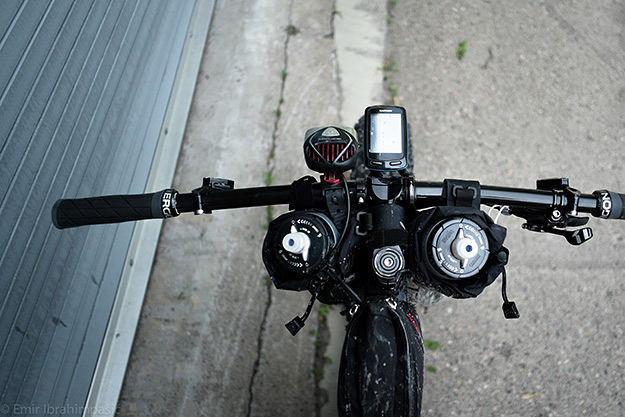
Now, when it’s not a frozen tundra, the warmer months in Minnesota really allow for us traverse the wealth of gravel roads found in the Midwest, but Iowa and Minnesota in particular. Gravel is unique in that it affords a completely different experience from the road. They are far less populated, far less traveled, and also much older, such that these roads feel more organic and intimate with the terrain they traverse. Instead of cutting through the land, they flow with it, rolling with the hills, descending and climbing through the numerous valleys and ravines. It’s much more challenging than riding on road and really affords a more peaceful, scenic experience (for example I went the 90 miles overnight without seeing another individual or town). Additionally, gravel racing also tends to see less of the egos common in road cycling, but more people interested in sharing a special experience, with collegiality complementing the ever-present racing atmosphere.

To that end, the Alexander 380 is part of a weekend of gravel races that occur every May in Spring Valley, Minnesota, a small town in southeastern Minnesota. The Almanzo is the 100 mile version. The Royal is the 160 mile option. And the Alexander is the 380 mile beast that travels through Minnesota, Iowa, and Wisconsin, with about 365 miles of the 385 mile course on gravel. As an aside, Wisconsin has less gravel roads than the other two states because of the dairy industry (lots of trucks and heavy equipment). Additionally, much of the course goes through an area of eastern Minnesota and Iowa, and western Wisconsin called the Driftless Valley. During the Ice Age (or something) these areas were spared from glacier flow that flattened much of the Midwest. As such, this area is littered with valleys, hills, steep climbs, and winding descents. Not quite hors categorie, but they certainly add up in elevation, as the Alexander climbs roughly 24,000 feet.
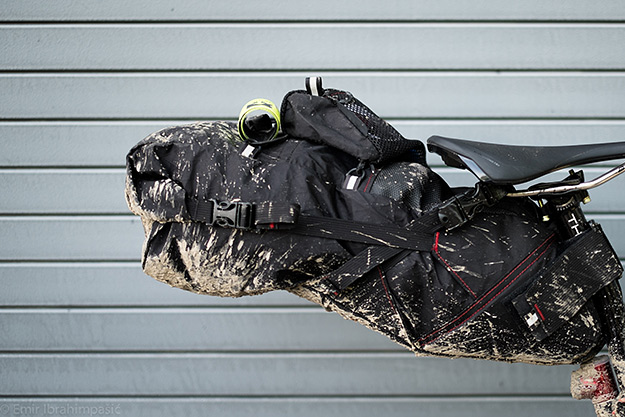
A major motivation for doing the Alexander was the fact that I’m more seriously focusing on winter ultra cycling events and have been slowly acquiring the experience, knowledge, and gear to successfully tackle them over the last couple years. The Alexander was a way for me to test out my set up (bike, bags, lighting, storage, devices, navigation) and also how I could handle riding the fat bike for many hours/days. Being a budding scientist and physician, I’m incredibly analytical and methodical when it comes to preparing for races, especially beyond physical training. In addition to the research aspect of the Alexander, given the scale of the event, I was really excited to take this on as a way to explore a new area of the country through a very unique, and intimate medium (the bicycle). This was going to be incredibly challenging, both physically and mentally, but I was quite excited to have the opportunity to escape from the real world for a while, to be self-sufficient and use the bike as a means to explore an incredibly beautiful and entirely foreign part of the Midwest.
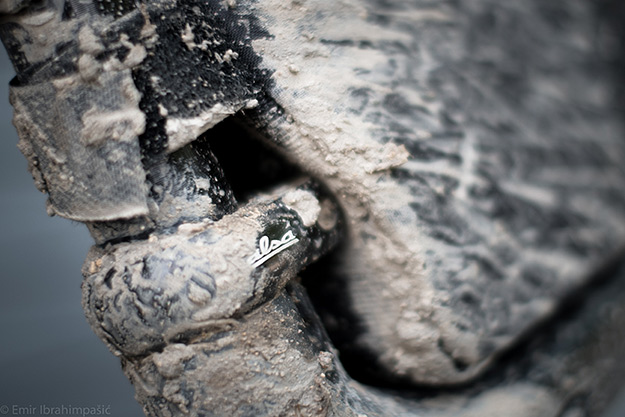
What made you select the Beargrease? While fat bikes began as beastly winter machines, over time a portion of them certainly have seemed to quickly evolve more race-oriented personalities though the use of carbon in various ways. The goal for my fat bike was to have something light and aggressive for racing and riding, but also comfortable and agile to be able to tackle longer distances on it. At the moment, only a few companies are making carbon fat bike frames, one of those being the Salsa Beargrease. The frame really fits my body and needs, and is quite versatile: with 170 mm hub spacing it has the ability accommodate wider tires up to 5 inches (good for winter and snowy conditions) or even 29er for faster trail riding in the summer.
The name of my bike, Ursula, plays on Beargrease name: “ursus” being Latin for “bear” and also actually “Ursula” being the sea witch antagonist in “The Little Mermaid.”
Fun fact: Salsa is a Minnesota-based company. Beargrease is an homage to the mailman John Beargrease who used to deliver mail along the shores of Lake Superior (northern Minnesota) via rowboat in the warmer months and dogsled in the winter months in the late 1800s.
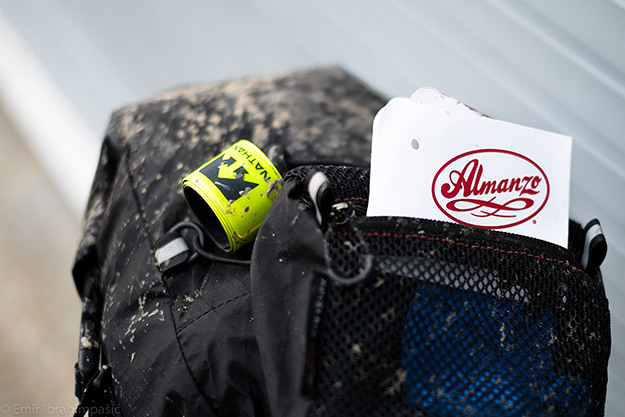
It looks fairly stock, right down to the tyres. Did you need to modify it in any way? Although the bike is not custom in the sense that I had the frame built just for me, the entire bike and its build specifications are uniquely designed around my needs, demands, and goals.
The reasons for selecting the Beargrease I touched on above, in an era of marginal gains, given the speed and terrain to which fat bikes travel, while aerodynamic advantages are negligible, weight savings are significant. As a result, the wheels are tubeless carbon rims (Whisky No 9). This is a two-fold weight advantage: carbon in the rim plus no need for a tube combines for a several hundred grams of rotational weight savings per wheel. One of the biggest upgrades possible beyond the frame and rider of course. Plus tubeless is fantastic for its reliability, ride feel, and ability to resist flats as compared to the traditional tubed wheel set-up.
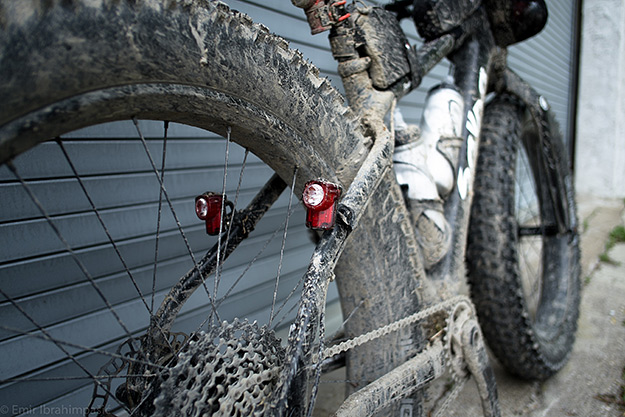
Tires used were the widest possible, the 5” wide 45NRTH Dillinger 5’s. These weren’t the best choice for a hilly gravel race given their size and aggressive tread, but they are great for loose conditions (ie. fresh snow). To put this into perspective even more, one Dillinger 5 tire weighs more than the medium Salsa Beargrease frame itself.
Next up is a SRAM 1×11 drive train. While most fat 1x set-ups are 28T (good for snowier less firm conditions, I chose to put a 30T in the front. This helps me to push a bigger gear, good for gravel, flats, and longer descents. And since the SRAM 11 speed rear cassette only has one “flavor” at the moment, this was the best way to tailor my drivetrain to the course. While hills here are not very long in length, they can get quite steep. Despite the weight, the gearing was quite manageable. Plus, 1×11 is fantastic for its simplicity. Easy to work on from a maintenance perspective (less to go wrong), but also mentally great: only one lever to worry about, no need to think about cross-chaining. A subtle, yet very key component for intense efforts and long rides that are as mentally demanding as they are physically.
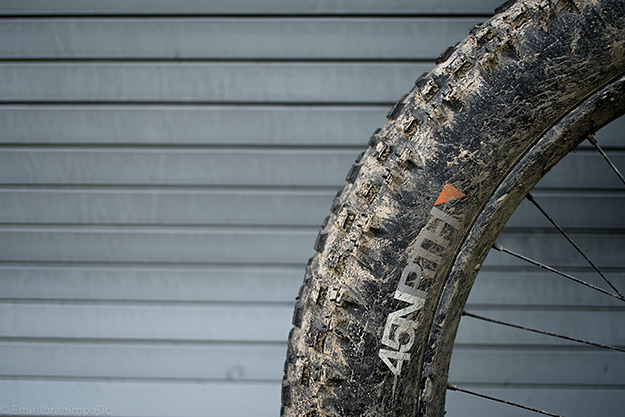
Hydraulic disc brakes were important for me because they provide very nice stopping power as compared to their mechanical counterpart. Although I don’t live in a notably mountainous area of the United States, the weight of my bike fully loaded (around 50 lbs) was a key motivator in going hydraulic. Another consideration in going with Hope Race Evo hydraulic brakes was that I live in Minnesota, where it gets quite cold in the winter, so much so that the mineral oil used in many hydraulic brakes can solidify and freeze. However, these Hope brakes use DOT fluid, which is known for its better performance at colder temperatures.
One other subtlety on the bike is the use of carbon bars made by Thomson. I selected Thomson for the seat post, stem, and bars because they are known for their quality and aesthetics (going for a uniform black theme on the bike), and are American made. While the stem and seat post are aluminum, carbon bars again were a decision guided by the Minnesota seasons. It wasn’t as much about weight savings or improving ride quality, although those are two known benefits here, but rather the thermal properties of carbon versus a metal like aluminum or titanium. Aluminum and titanium have high thermal conductive versus carbon, which has an incredibly low thermal conductivity. This means that when riding during the harsh Minnesota winters, my bars will not be as cold or suck heat away from my gloves and body as readily, meaning warmer, happier, hands.
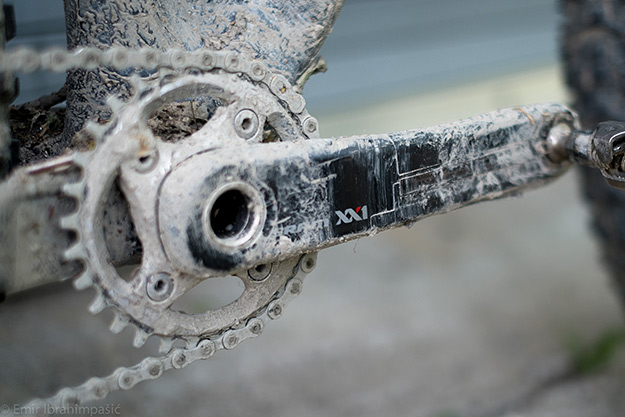
How did the Beargrease handle the ride? Everything performed quite wonderfully. Really comfortable and easy to ride and maneuver over a variety of road conditions and terrains. Even with significant weight added onto the bike itself, it’s surprisingly easy to negotiate more rocky and technical sections found on the Alexander course (though still a bit more sluggish than many mountain bikes). Between the bike and bag setup, everything came together nicely to produce a machine that was well organized and pleasant to ride over many miles and hours. No real setbacks or hurdles with respect to my gear mean that I was able to focus more on navigating the course and riding.
What other types of these races have you competed in? This was my second gravel race I have competed in. First was the Almanzo 100 in 2013. The Almanzo 100 takes place the same weekend as the Alexander 380, and they both start and end in Spring Valley, Minnesota. Different races but both have a similar mindset: a self-supported gravel race. When I did the Almanzo 100 two yeas prior to taking on the Alexander, I did it on my road bike with 28 mm tires at 70 PSI (I don’t own a cross bike so this was my best race-oriented set-up I could achieve). That rode quite well but struggled over the sections with fresh gravel (more soft and loose). The Alexander, given its length and my decision to do it on a fat bike, was a totally different beast.
Beyond these, my background is in collegiate road racing and also road ultra cycling. I’ve done many races ranging from 200 to 500 miles, as well as a host of brevets. I’m relatively new to Minnesota (a few years) so the gravel and fat biking scene is also new to me, but I’m really learning to appreciate the state for all the unique disciplines of riding it affords and where it can take me!
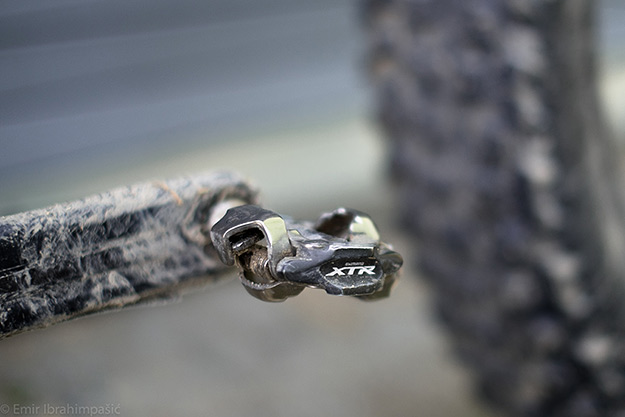
Can you briefly describe the parts list?
• Topeak Road Morph G pump.
• CO2 cartridges plus adapter.
• Two tubes (just in case hole in tubeless tire was too big).
• Multi-tool (wrenches etc.)
• Tire levers.
• Duct tape (of course).
• Chain tool.
• Master link.
• Tiny bottle of lube (400 miles of wet, dirty, dusty roads, chain was surely to be abused).
• Front lights: Light and Motion Seca 800 (two batteries). Cytolite Expilion 850 (two batteries). L&M on the bars. Cygolite on a special adapter below the bars.
• Rear lights: Exposure Blaze Mk1. Two Cygolite Micros. Exposure light on the seat post below the seat bag. One Cygolite on each chain stay.
I don’t mess around when it comes to being visible on long rides like this. Weight is negligible in the grand scheme of things and being able see the road, and ensuring drivers and others see me is a huge priority. Bike is taped also with black reflective tape.
Best part is that all lights except the L&M front are USB-rechargable, so with my external battery packs, I could use up all the lights during the night and charge them during the day, ready for a second full night of riding if I needed that. Fits with the self-supported theme, having everything I need to weather any storm.
• Garmin Edge 800: turn by turn navigation plus other normal computer metrics (speed, distance, etc…). Also USB-rechargeable, thus could charge and use at the same time.
• Anker USB battery packs (3 total). Charge them at home and carry with me to charge lights, computer, and phone very easily and effectively.
• Four water bottles. Hugely important since parcours was incredibly remote. I rode 90 miles overnight without seeing a town or another person (though did get chased by some dogs). In reality 4 bottles wasn’t enough. Should have used a reservoir like a Camelbak.

How do you find the Revelate gear? Revelate Designs is a company out of Alaska that is well known for making high quality bags, targeting the bike-packing or bike touring market, that can work across a variety of bike frames and platforms. No need for braze-ons, adapters, or racks. Just well-designed/placed velcro, buckles, and straps. There are several smaller shops (individuals) that do custom bags (primarily with a focus on aesthetics) but I didn’t foresee a need to go this route just yet. Nevertheless, even if considered “stock,” the range of Revelate Designs bags is quite diverse such that I could pick and choose what sizes, designs, and options I wanted in order to create a bag and storage system that met my goals and needs with respect to size, placement, and access, and of course also fit well on the bike. I also required that the bags be very durable, waterproof or highly water-resistant, and easy to install and adjust (simplicity lending itself to easier fixes if anything comes up while racing on course). Fortunately, everything worked quite very smartly onto the frame and bike, and served a key purpose for me. I actually found that some of these bags (the water bottle ones on my bars in particular) are among the best designed out there as they not only had storage for bottles, but are also insulated to keep bottles colder longer and also have mesh pockets on the outside too, great for holding food and battery chargers (as the photos show). These fit the bill. No impact on my position (body with respect to body and hands on the bars) as well as pedaling. Extra weight aside, they were simply an extension of the bike and didn’t impair or hinder my riding ability.
The Spoken would like to thank Balvindar Singh for his time and insight. Also, massive thanks to Emir Ibrahimpašić for the photography. You’ll have seen some of his shots on here before; he captured The World’s Lightest Bike, still proving to be one of our most popular pages ever.
Salsa Cycles Website | Facebook | Instagram





